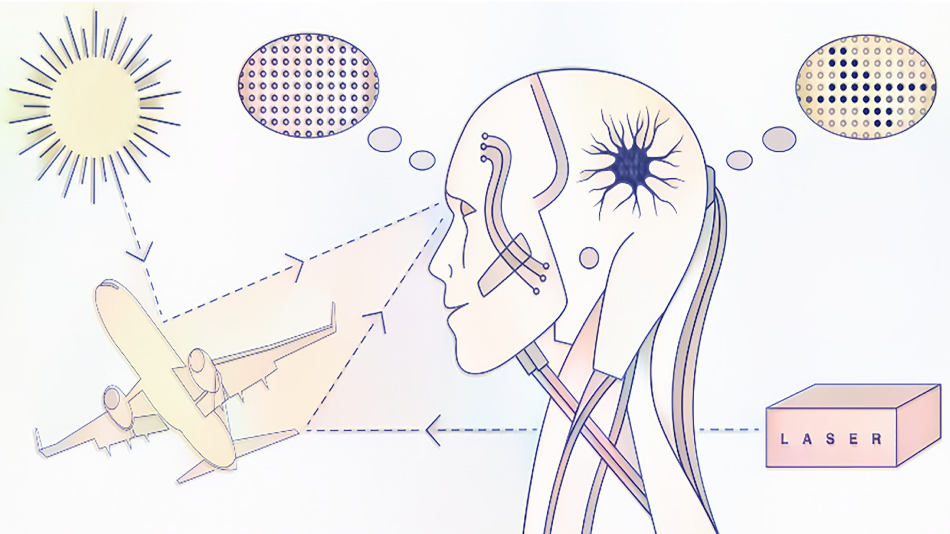May 6 2020
For developing various photonic technologies, including remote sensing, lidar, and microscopy, it is highly crucial to identify the sources of light.
 A detector (the eye) measures identical photons from natural sunlight and laser light. The fast identification of light sources is performed by an artificial neuron that is trained to efficiently extract patterns in the quantum fluctuations of photons. Image Credit: Elsa Hahne.
A detector (the eye) measures identical photons from natural sunlight and laser light. The fast identification of light sources is performed by an artificial neuron that is trained to efficiently extract patterns in the quantum fluctuations of photons. Image Credit: Elsa Hahne.
Conventionally, millions of measurements are required, specifically in low-light settings, to identify sources light as diverse as sunlight, molecule fluorescence, or laser radiation. This fact hampers the real-time implementation of quantum photonic technologies.
Researchers have now developed and demonstrated a smart quantum technology that allows a drastic reduction in the number of measurements needed to identify sources of light. The technology has been described in the Applied Physics Reviews journal, from AIP Publishing.
We trained an artificial neuron with the statistical fluctuations that characterize coherent and thermal light.
Omar Magana-Loaiza, Study Author
Once the artificial neuron was with light sources by the researchers, it could identify fundamental features associated with particular types of light.
A single neuron is enough to dramatically reduce the number of measurements needed to identify a light source from millions to less than hundred.
Chenglong You, Fellow Researcher and Study Co-Author
Light sources can be identified much faster with fewer measurements by the researchers. In some applications, like microscopy, light damage can be limited since it is not necessary to illuminate the sample almost as many times while performing measurements.
If you were doing an imaging experiment with delicate fluorescent molecular complexes, for example, you could reduce the time the sample is exposed to light and minimize any photodamage.
Roberto de J. León-Montiel, Study Co-Author
The study outcomes could prove valuable in another application—cryptography. Researchers must take millions of measurements essentially to produce a key to encrypt an email or message. “We could speed up the generation of quantum keys for encryption using a similar neuron,” stated Magana-Loaiza.
Since laser light has a crucial role to play in remote sensing, this study could also facilitate the development of a new class of smart lidar systems that can identify modified or intercepted information reflected from a remote object.
Lidar is a remote sensing technique in which distance to a target is measured by illuminating the target using laser light and using a sensor to measure the reflected light.
“The probability of jamming a smart quantum lidar system will be dramatically reduced with our technology,” he added. Moreover, the feasibility to differentiate lidar photons from environmental light, like sunlight, will have crucial implications for remote sensing at low levels of light.
Journal Reference:
You, C., et al. (2020) Identification of light sources using machine learning. Applied Physics Reviews. doi.org/10.1063/1.5133846.